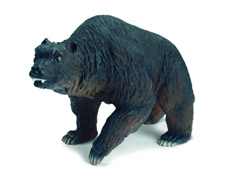Israeli Cave Promises an Abundance of Prehistoric Artifacts
New Cave Discovered in Israel provides insight into Prehistoric Life
Construction workers digging drainage and sewage pipes in the Jewish National Fund forest have discovered a large cave system containing many prehistoric artifacts. The workers broke into the cave as they were constructing an underground pathway for a sewage pipe in the western Galilee forest.
Prehistoric Artifacts
Some of the larger chambers contain spectacular stalactites and stalagmites, formed as minerals such as calcite dissolved out of dripping water. The word stalactite is actually derived from the Greek word “stalaktos” which means dripping. Stalactites are tapering deposits of calcite that hang down from the roof of caves like icicles. Stalagmites are formed from dripping water and form rising, tapering mounds that in many cases unit with stalactites to form spectacular columns.
To help remember the difference between these two calcite structures – “stalactites hold on tight to the ceiling, whereas stalagmites might one day join up with them.
Commenting on the potential of the cave system to provide evidence of life in prehistoric times, a spokesperson from the Israel Antiquities Authority stated that already a large amount of prehistoric material had been discovered.
“It seems that during the past 40-50 years no cave has been found with such a wealth of prehistoric finds and certainly not inside such a lovely stalactite cave”, claimed Dr. Ofer Marder, the head of the Prehistory Branch of the Israel Antiquities Authority, who examined the cave.
The cave system opens out into a number of large chambers, the largest measuring 60 x 80 metres, this is approximately four times the width and three times the length of a basketball court. Soil and other debris has fallen or been washed into the cave from the surface and a large number of flint tools used by early settlers have been found along with the bones of a variety of animals that are no longer indigenous to the area. Bones of red deer, fallow deer, buffalo and the remains of bears have been found.
Ursus spelaeus
The remains of the bears are particularly interesting, as the cave deposits have been dated from between 40,000 years to 10,000 years ago. The bones could have come from Brown bears (Ursus arctus) or possibly the larger Cave bear (Ursus spelaeus). These large animals, some of which may have weighed up to 1 Tonne and had a height of over 2 metres at the shoulder, evolved around 300,000 years ago and survived to about 40,000 years ago, making any evidence found in the Israeli cave some of the last traces left by these huge omnivores. Further work is required to confirm the presence of Cave bear remains, these bears were about 35% bigger than Brown bears, had fewer teeth in the jaws, skulls with a distinctive slope and their limbs were proportioned differently.
A Model of Ursus spelaeus (Cave Bear)

Picture credit: Everything Dinosaur
The picture above is a model of a Cave bear from the Schleich Prehistoric Mammal model collection a series of 1:20 scale models of mammals from the Pleistocene epoch.
To view the model range available from: Dinosaur and Prehistoric Animal Models.
Statement Released
In a statement released by the Israel Antiquities Authority they claim that preliminary studies indicate that the remains in the cave date from the Upper Palaeolithic period, otherwise known as the Late Stone Age. This period dates from 40,000 years ago to approximately 10,000 years ago, the beginning of the Holocene a period in Earth’s history of dramatic climate change, increasing human populations and the start of sedentary agriculture.
The cave has been sealed and its exact location kept secret but further research is planned permitting a more accurate date to be placed on some of the finds and the cave system to be properly explored.

